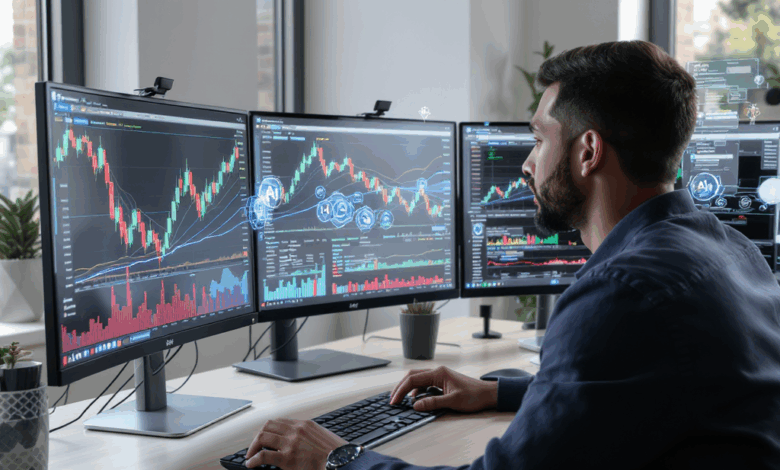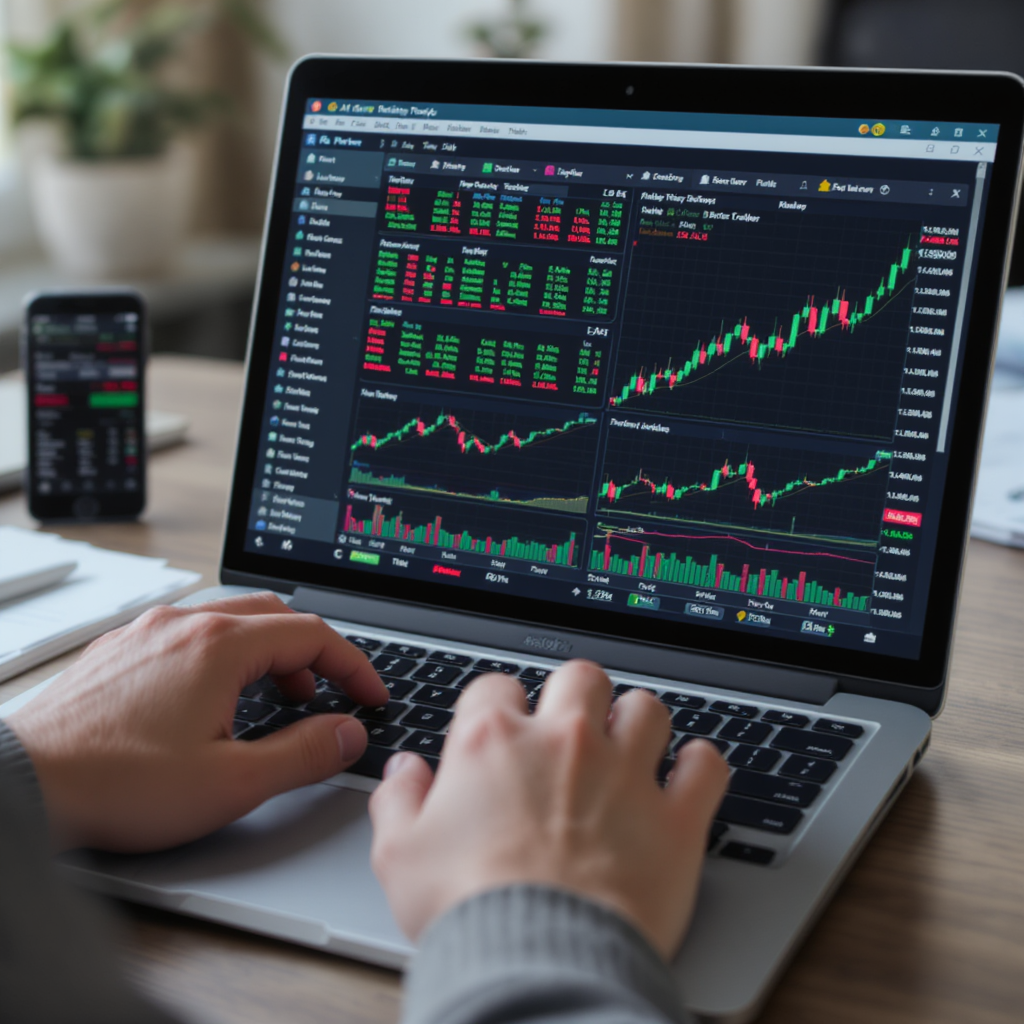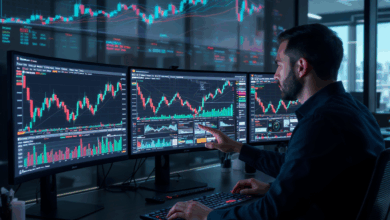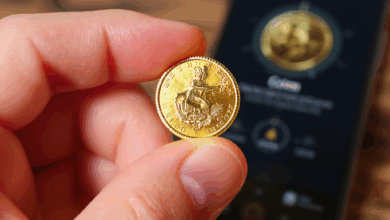Can You Really Automate Stock Trading Using AI? A Beginner’s Guide to Getting Started

Have you ever wondered if a computer could actually manage your stock trades better than you can? I remember standing in front of my screen, overwhelmed by the flood of stock charts, news, and data—feeling like I was chasing a moving target. It seemed like true automation was something only the pros with deep pockets could pull off. But lately, there’s been a shift that makes me question everything I thought I knew about trading.
Is it really possible now for individual investors to harness AI tools to automate stock trading without needing a PhD in finance or years of coding experience? That question has been buzzing in my mind ever since I stumbled upon stories of retail investors in places like China enthusiastically adopting AI platforms like DeepSeek. These aren’t just tech geeks—they’re everyday people leveraging sophisticated algorithms to level the playing field.
The financial world is not standing still either. Big institutions like JPMorgan Chase openly credit AI for helping them weather recent market turmoil and even boosting sales by 20% in asset management. And the acquisition of AI-focused firms by platforms like Robinhood signals that the democratization of AI trading isn’t coming—it’s already here.
But what’s the real value for someone like you or me? This isn’t just about fancy tech jargon or abstract promises; it’s about practical, actionable steps. Imagine using AI-powered tools like Trade Ideas to receive real-time stock signals or employing user-friendly bots like WunderTrading to execute trades automatically—all without writing a single line of code. These tools promise to make complex strategies accessible, but they also require us to understand their workings, monitor performance, and adjust when markets shift.
This guide will take you through the landscape of AI-driven stock trading automation as it stands today. We’ll explore the latest platforms, break down features like natural language strategy building and market sentiment analysis, and offer tips on combining tools to suit your style. You’ll gain insight into how to navigate this new terrain confidently, avoiding common pitfalls while tapping into the power AI offers.
So, if you’ve ever hesitated to dive into AI-assisted trading because it seemed too complex or out of reach—what if the barrier isn’t as high as you think? Together, we’ll unpack what’s possible right now, and maybe, just maybe, you’ll find yourself ready to take the first step toward automating your trading journey. Are you curious to see how this technology could change your approach to the markets?
When AI Meets the Market Can We Really Hand Over Our Trades?
I still remember the moment when I first toyed with the idea of automating my stock trades. It was a mix of fascination and skepticism. Could a machine really understand the chaotic pulse of the market better than I could? Watching retail investors in China adopt platforms like DeepSeek made me pause. These were not hedge fund wizards but everyday traders leaning on AI to guide their decisions. It challenged my assumptions about who could access and benefit from such technology.
Why AI Trading Tools Are More Than Just Fancy Gadgets
The financial landscape is shifting rapidly. Big players like JPMorgan Chase credit AI for navigating rough market waters, increasing their asset management sales by 20% amid volatility. Meanwhile, Robinhood’s acquisition of Pluto Capital signals a strategic move to make personalized AI-powered investment advice accessible to everyday users. But what does this mean for us, the individual investors?
AI-driven platforms are no longer the exclusive domain of experts with coding skills or deep pockets. Tools such as Trade Ideas provide real-time stock signals by analyzing mountains of data faster than any human could. On the other hand, platforms like WunderTrading empower users to create automated trading bots without writing complex code, making algorithmic trading approachable.
The Building Blocks What You Need Before Diving Into AI Trading
Before jumping in, it’s crucial to prepare:
– Understand Your Goals: Are you looking for long-term growth or short-term gains?
– Choose the Right Platform: Each AI tool has unique strengths—some excel at technical analysis (like TrendSpider), others at sentiment analysis (like StockGeist).
– Learn the Basics of AI Trading: Familiarize yourself with how algorithms interpret data and make decisions. This will help you trust and effectively monitor your AI assistant.
– Set Up Risk Controls: Automation does not eliminate risk. Define stop-loss levels and other safety nets.
Step-by-Step How to Start Automating Your Stock Trading
-
Select an AI Platform That Fits Your Style
Explore options like Trade Ideas for signal generation or Capitalise.ai if you prefer natural language commands. -
Create or Choose a Trading Strategy
Use pre-built algorithms or customize your own based on your risk tolerance and market outlook. -
Backtest Your Strategy
Run your algorithms against historical data to see how they would have performed. -
Deploy Your Bot with Real Capital
Start small to test the waters before scaling up. -
Monitor and Adjust Regularly
Markets evolve; your AI strategies must too. Check performance, tweak parameters, and stay informed about market trends.
Tips and Precautions Navigating the AI Trading Terrain
- Diversify Your Tools: Don’t rely on a single AI platform. Combining strengths—like pairing Trade Ideas’ signals with TrendSpider’s charting—can offer a more holistic view.
- Stay Updated on Regulations: AI in trading is a fast-moving field. Regulatory frameworks may change, impacting how you can use these tools.
- Maintain Human Oversight: Automated doesn’t mean autonomous. Your judgment remains essential to interpret AI outputs and make final decisions.
Facing Challenges Head-On
Automation promises efficiency, but it’s not without hurdles. Technical glitches, overfitting in algorithms, or sudden market shocks can lead to unexpected losses. Building a habit of continuous learning and cautious experimentation can help mitigate these risks.
Looking Ahead Is This the New Normal?
AI tools are undeniably transforming stock trading, blurring lines between professional and individual investors. Yet, this democratization brings new questions: Are we ready to trust machines with our financial futures? How much control should we relinquish? And importantly, what will the role of human intuition be in an AI-augmented market?
Perhaps the real journey begins not with mastering AI tools but with embracing the evolving partnership between human insight and machine intelligence. What do you think—could this be the start of a new kind of trader, one who thinks alongside AI rather than competing against it?

Reflecting on the journey through AI-driven stock trading automation, it’s clear that what once seemed like an exclusive playground for finance wizards is now opening its gates to everyday investors. The evolving landscape—marked by accessible tools like Trade Ideas and WunderTrading, alongside institutional endorsements—signifies a profound shift: AI is not just augmenting trading but democratizing it. Yet, this transformation invites us to rethink our relationship with technology—not as a blind leap but as a thoughtful partnership where human judgment and machine efficiency coexist.
This article has offered more than just a roadmap; it’s revealed the mindset needed to navigate this new terrain with curiosity and caution. You’ve glimpsed how to align AI tools with your unique goals, the importance of risk controls, and the continuous dance of monitoring and adjusting strategies. These insights are your compass for embarking on automation without losing sight of personal agency.
So, what’s next? Why not take the first step today—explore an AI platform that resonates with your style, experiment with a simple trading bot, or backtest a strategy that intrigues you. The barrier is no longer technical mastery alone; it’s the willingness to engage, learn, and adapt. Remember, success in this space isn’t about surrendering control but enhancing it.
Looking forward, as AI continues to weave deeper into financial markets, we might find ourselves at the dawn of a new trader archetype—one who thinks alongside algorithms rather than against them. This partnership could redefine not only how trades are executed but how we understand market dynamics and risk.
Before we part, I invite you to ponder: How comfortable are you with trusting a machine in your financial decisions? And how might embracing AI reshape your own investing journey? If this perspective struck a chord, why not take a moment to apply it in practice? The future of trading isn’t just about technology—it’s about how we, as individuals, choose to engage with it.





